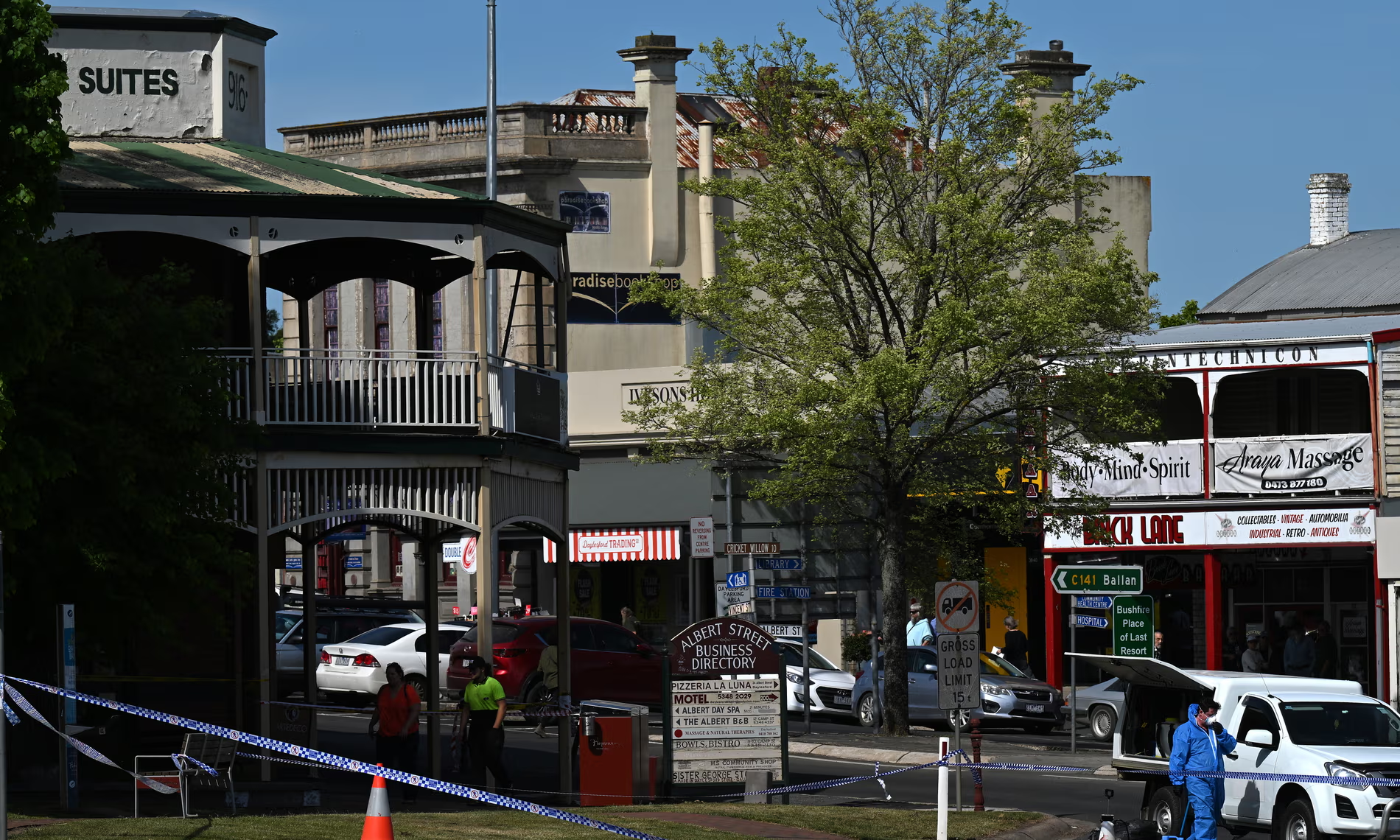Meeniyan supermarket appearance charms staff and shoppers as expert calls to make urban environments ‘less hostile’
A confused koala surprised staff and customers at a regional IGA supermarket after he wandered through the store’s front doors and made his way through the aisles.
Kaelene Shervell, owner of the Meeniyan IGA, about two hours south of Melbourne, said the koala was determined to come inside and resisted staff attempts to encourage him back out the front door.
The marsupial, which staff said was a teenage male, spent 20 minutes wandering the store. Images from the IGA showed him climbing the newspaper stand, exploring the herb selection, and reaching for soft toys on display.
“It was … a pretty awesome experience,” Shervell said. “But we were very, very concerned for his welfare and trying not to get too excited and [maintain] a calm situation.”
One customer called a local wildlife carer, who stayed on the phone for the koala’s entire visit, providing advice. Staff were eventually able to lure him onto a step ladder, which they used to safely transport him back outside, away from the road.
(He was not given a name, but “modern-day Blinky Bill” had been suggested more than once, Shervell said.)
Shervell said that while there is a prominent koala population around the local area – frequenting trees along a bicycle path or the occasional backyard – to encounter one inside a business was rare.
“I’ve had the shop for nearly 10 years … and I haven’t had a koala that close,” she said. “They’re usually up the tree over the road, or having a little wander on the bicycle trail, but I’ve never come across one inside a store.”
Dr Bill Ellis, a koala ecologist from the University of Queensland, said that the marsupials are seasonal breeders, so tend to move around more at this time of year.
Males wander in search of new environments, and can also start “bellowing”, which means females may also venture out of their usual homes to find a mate.
Ellis said that deforestation was likely to play a role in driving koalas to irregular locations, due to the “squeeze on [them] for space”.
“Koalas are having to make do in smaller patches … [with] the habitats becoming more and more fragmented, and so they are turning up in quite unusual places because they don’t have anywhere else to go,” he said.
Ellis said the biggest problems facing the species are cars, dogs, disease, and a lack of trees. He pointed to efforts being taken in south-east Queensland to make the urban environment less hostile for koalas as something that could be replicated elsewhere.
“We can’t do much about the fact that we’ve already created these urban landscapes, but we can make them less hostile and more friendly to wildlife,” Ellis said.
“I’d like to think that at some point in time it … will be more usual to see a live koala in the urban environment than a dead one. Whereas, at the moment, I think we see them in this kind of a situation: they turn up somewhere strange, or they get hit on the road.”
There have been at least two reports of koalas killed on roads near Meeniyan in Victoria this year – one in January, and one just a week ago.
Ellis congratulated the IGA team for calling a wildlife carer, and urged anyone living in areas with lots of wildlife to keep the number of a local carer in their phone.
“They’re amazing people – they will answer the phone at two o’clock in the morning and tell you what to do, or come and help you,” he said.
Related posts:
- Perth bodybuilder Giuliano Pirone, 33, dies days after being found unconscious in gym shower
- Social media ban for children to be introduced this year, but age limit undetermined
- Dozens arrested after clashes at Melbourne anti-war protest
- Robodebt department head claims she was unfairly blamed for having ‘dreamed up’ unlawful scheme










Leave a Reply